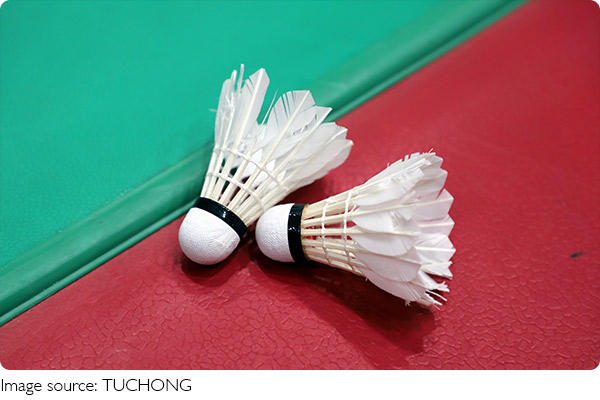Badminton Serve Strategy

Badminton, as one of the fastest-paced sports, requires not only physical agility but also strategic thinking to gain an edge over your opponent.
While many players focus on rallies and powerful smashes, the serve is often an underrated weapon that can completely influence the flow of the game. Whether we're playing singles or doubles, our serve is the first opportunity to set the tone of the match.
So, how can we use the serve to control the pace and dictate the rhythm of the game? Let's dive into some effective serving strategies that can help us stay ahead.
Understanding the Importance of the Serve
In badminton, the serve is more than just a way to start a rally. It plays a key role in determining the pace, flow, and outcome of the game. A strong and well-placed serve can put pressure on the opponent from the very first shot. On the other hand, a poor or predictable serve can give the opponent an easy advantage. This is why mastering the serve and using it strategically is so important.
By varying the type, speed, and placement of our serves, we can keep our opponents on their toes, forcing them to adapt constantly. As we look at the different types of serves, we'll also explore how we can use each one to control the match's tempo.
Types of Badminton Serves
Before we discuss how to control the pace, let's first understand the various types of serves we can use. Each serve serves a specific purpose, and knowing when and how to use each one is crucial for our strategy.
1. Short Serve: The short serve is intended to travel just over the net, forcing the opponent to play a low return. This serve is effective for controlling the game's pace early on, as it forces the opponent to be quick and focused. By using a short serve, we can create opportunities for quick attacks, especially if the opponent struggles to respond with precision.
2. Long Serve: The long serve is designed to reach the back of the court, pushing the opponent deep into their side. A well-executed long serve can give us time to prepare for the next shot and dictate the pace by controlling the opponent's positioning. This serve works particularly well when we want to shift the game to a more defensive stance, slowing things down and forcing the opponent to cover a lot of ground.
3. Flick Serve: The flick serve is a deceptive serve that appears like a short serve but suddenly speeds up toward the back of the court. It's an excellent tactic to surprise opponents who are expecting a short serve. By using the flick serve, we can throw off our opponent's timing and prevent them from settling into a rhythm.
4. Drive Serve: A drive serve is a fast, low serve aimed at the opponent's midsection or sides. This serve is effective for putting pressure on the opponent right from the start and forcing them into a defensive position. It's especially useful in doubles matches when we want to keep the opponent on the move.

Using the Serve to Control the Match Pace
Now that we know the different types of serves, let's explore how we can use each one to control the pace of the game.
1. Vary the Speed and Placement
One of the most effective ways to control the rhythm of the match with our serve is by varying the speed and placement. For instance, alternating between a fast drive serve and a slow, delicate short serve keeps our opponent guessing. By changing the direction (cross-court or down the line) and the height of the serve, we can disrupt our opponent's expectations and timing. This unpredictability forces them to adjust continuously, slowing them down and taking away their comfort zone.
2. Use Deception to Keep Opponents on Edge
Deception is a powerful tool in badminton, and it applies perfectly to our serves. By disguising our intentions, we can trick the opponent into anticipating a specific type of return. For example, if we've been using short serves throughout the match, we can suddenly switch to a flick serve to catch the opponent off guard. Changing up our serve strategy frequently forces the opponent to stay alert, preventing them from gaining control of the match.
3. Force Defensive Play with a Low Serve
By consistently using a low, short serve, we can compel our opponent to react quickly and play defensively. This type of serve can disrupt their rhythm, especially if they're accustomed to more aggressive returns. If we notice that our opponent struggles with low serves, we can continue to exploit this weakness, forcing them to keep their returns tight and minimizing their chances of attacking.
4. Adjust Your Serve for the Opponent's Weaknesses
Paying attention to our opponent's weaknesses is essential in creating a tailored serving strategy. For instance, if we observe that our opponent struggles with high serves, we can frequently use the long serve to push them to the back of the court. Alternatively, if they have a weak backhand, we can aim our serve to that side to create pressure and force errors.
5. Use the Serve to Control the Tempo of the Game
In badminton, the speed and flow of the game can often be dictated by the server. If we want to slow down the game and regain control after a fast rally, using a slow, short serve allows us to break the opponent's momentum. Conversely, when we want to increase the pace and catch our opponent off guard, a powerful flick or drive serve can shift the tempo quickly.
6. Stay Consistent and Confident
Consistency and confidence are key when it comes to the serve. If we are unsure or inconsistent with our serves, we give our opponent an opportunity to capitalize on our mistakes. Practicing serves regularly and maintaining a positive mindset will help us build confidence and improve our overall game. By staying focused and composed, we can control the rhythm of the match more effectively.
Conclusion: Master Your Serve for Greater Control
The serve is often overlooked as a tactical tool, but it holds immense power in controlling the pace of the game. Whether we are playing singles or doubles, mastering the serve allows us to take charge of the match right from the first point. By varying the type, speed, and placement of our serves, using deception, and adjusting our tactics to the opponent's weaknesses, we can gain the upper hand and dictate the tempo of the game.
Remember, the key to a great serve isn't just power; it's about using your serves strategically to create opportunities, build pressure, and keep your opponent off balance. The more we practice these techniques and develop our serving strategies, the more we'll be able to control the flow of the match and set ourselves up for success.
Do you have any favorite serve strategies? How do you use the serve to control the pace of your game? Share your thoughts in the comments below! Happy playing!

 · Sport Team
· Sport Team